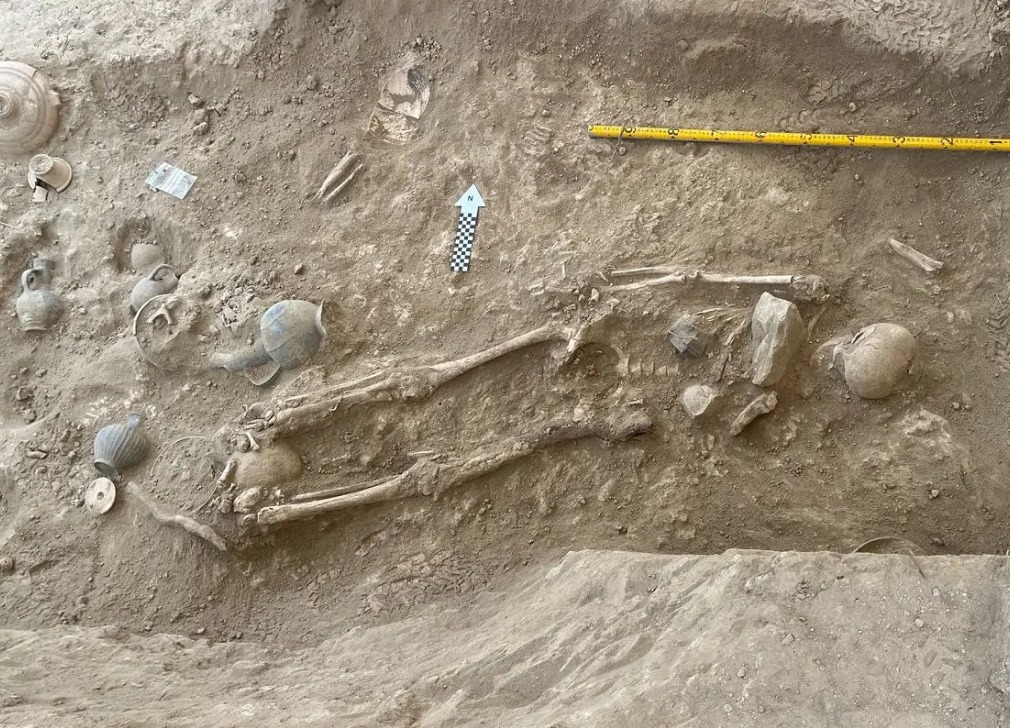
Archaeologists have discovered royal tombs near the site of an ancient Bronze Age city on the island of Cyprus.
Researchers from the University of Gothenburg uncovered burials dating to between 1500 and 1300 BC. The tombs were discovered near the ancient Cypriot city of Dromolaxia Vizatzia, not far from the site of Hala Sultan Tekke.
The tombs date to a period when the city was a hub for the copper trade in Cyprus and wider the Eastern Mediterranean region. The researchers have described the burials as being among the “richest” example ever discovered in the Mediterranean.
Royal tombs in Cyprus
“It is a reasonable assumption that these were royal tombs, even though we do not know much about the form of government practiced in the city at the time,” said Professor Peter Fishcher from the University of Gothenburg.
The archaeological site was uncovered through the utilization of magnetometers, which are instruments employed in geophysical surveys to measure the Earth’s magnetic field.
Magnetometers are capable of detecting and analyzing magnetic anomalies of different kinds, aiding in the identification of magnetic properties and characteristics of various materials. Furthermore, these devices assist in determining the dipole moment of magnetic substances.
“We compared the site where broken pottery had been plowed during farming with the magnetometer map, which showed large cavities one to two meters below the surface. This led us to continue investigating the area and to discover the tombs,” the professor explained.
Discoveries
The tombs comprise subterranean chambers, with dimensions reaching up to 4 by 5 meters, accessible through a narrow passageway from the surface. Within two of these chambers, the team made a remarkable discovery of over 500 intact artifacts. These artifacts include precious metals, gems, bronze weapons, ivory, high-status ceramics, and a haematite seal enclosed in a gold frame.
Approximately half of the contents found within the tombs were sourced from neighboring cultures and civilizations. Notably, gold and ivory were imported from Egypt, while precious stones originated from Afghanistan, India, and Sinai. Additionally, amber objects were discovered, indicating their origin in the Baltic region.
During the excavations, several remarkably well-preserved skeletons were unearthed. Among them, a burial site contained the remains of a woman, adorned with numerous ceramic vessels, jewelry, and a round bronze mirror, showcasing the significance and elaborate nature of the burial.
“Several individuals, both men and women, wore diadems, and some had necklaces with pendants of the highest quality, probably made in Egypt during the 18th dynasty at the time of such pharaohs as Thutmos III, and Amenophis IV (Akhenaten) and his wife Nefertiti,” commented Professor Fishcher.
The Bronze Age city
The archaeological site of the Bronze Age city (3300 BC-1200 BC) is usually given the name Hala Sultan Tekke, after the mosque that was built ( 1760-1817 AD) not far from the excavation site.
After more than 500 years as a significant trading center, the city eventually fell, around 1200 BC, along with numerous other advanced Bronze Age civilizations in the Mediterranean.
According to some theories, an invasion by the “Sea Peoples” wiped out the Bronze Age civilizations of the eastern Mediterranean by demolishing their towns.
See all the latest news from Greece and the world at Greekreporter.com. Contact our newsroom to report an update or send your story, photos and videos. Follow GR on Google News and subscribe here to our daily email!



